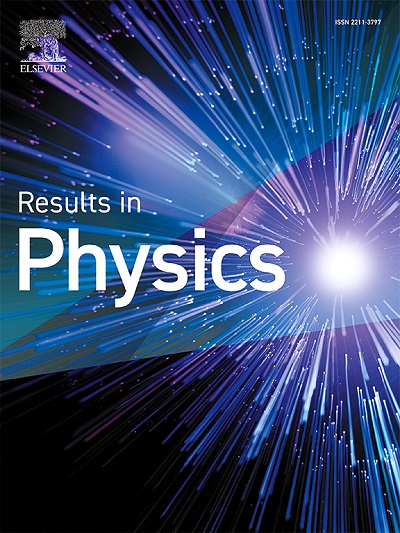A novel approach for determining the peak-to-valley current ratio in nanomaterial devices
IF 4.6
2区 物理与天体物理
Q2 MATERIALS SCIENCE, MULTIDISCIPLINARY
引用次数: 0
Abstract
The peak-to-valley current ratio (PVCR) was determined using a new method based on the transfer matrix technique. This method was applied to right-triangular (sawtooth) and rectangular nanomaterial double barrier diodes composed of GaAs-Ga1-yAlyAs semiconductor materials. It was observed that the well width, barrier thickness, and aluminum content of the barrier material, along with the applied bias voltage and temperature, significantly influenced the PVCR values. It was also found that the resonant tunneling nanostructured devices have pronounced PVCR values at low temperatures and nearly thick barriers. The results of the PVCR are in good agreement with the published experimental and theoretical data. This method can be applied to estimate the required parameters for high-performance resonant nanostructure devices.
一种测定纳米材料器件中峰谷电流比的新方法
提出了一种基于转移矩阵技术的峰谷电流比测定方法。将该方法应用于由GaAs-Ga1-yAlyAs半导体材料组成的直角三角形(锯齿形)和矩形纳米双势垒二极管。结果表明,井宽、势垒厚度、势垒材料铝含量以及施加的偏置电压和温度对PVCR值有显著影响。研究还发现,谐振隧道纳米结构器件在低温下具有明显的PVCR值,且势垒接近厚。PVCR的计算结果与已发表的实验和理论数据吻合良好。该方法可用于估计高性能谐振纳米结构器件所需的参数。
本文章由计算机程序翻译,如有差异,请以英文原文为准。
求助全文
约1分钟内获得全文
求助全文
来源期刊

Results in Physics
MATERIALS SCIENCE, MULTIDISCIPLINARYPHYSIC-PHYSICS, MULTIDISCIPLINARY
CiteScore
8.70
自引率
9.40%
发文量
754
审稿时长
50 days
期刊介绍:
Results in Physics is an open access journal offering authors the opportunity to publish in all fundamental and interdisciplinary areas of physics, materials science, and applied physics. Papers of a theoretical, computational, and experimental nature are all welcome. Results in Physics accepts papers that are scientifically sound, technically correct and provide valuable new knowledge to the physics community. Topics such as three-dimensional flow and magnetohydrodynamics are not within the scope of Results in Physics.
Results in Physics welcomes three types of papers:
1. Full research papers
2. Microarticles: very short papers, no longer than two pages. They may consist of a single, but well-described piece of information, such as:
- Data and/or a plot plus a description
- Description of a new method or instrumentation
- Negative results
- Concept or design study
3. Letters to the Editor: Letters discussing a recent article published in Results in Physics are welcome. These are objective, constructive, or educational critiques of papers published in Results in Physics. Accepted letters will be sent to the author of the original paper for a response. Each letter and response is published together. Letters should be received within 8 weeks of the article''s publication. They should not exceed 750 words of text and 10 references.
 求助内容:
求助内容: 应助结果提醒方式:
应助结果提醒方式:


